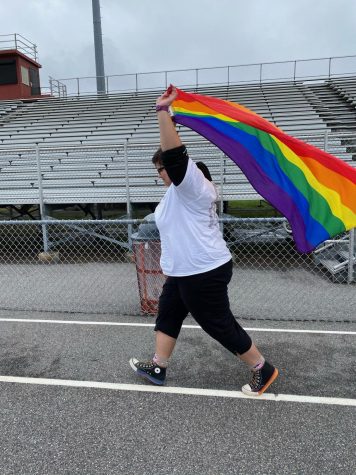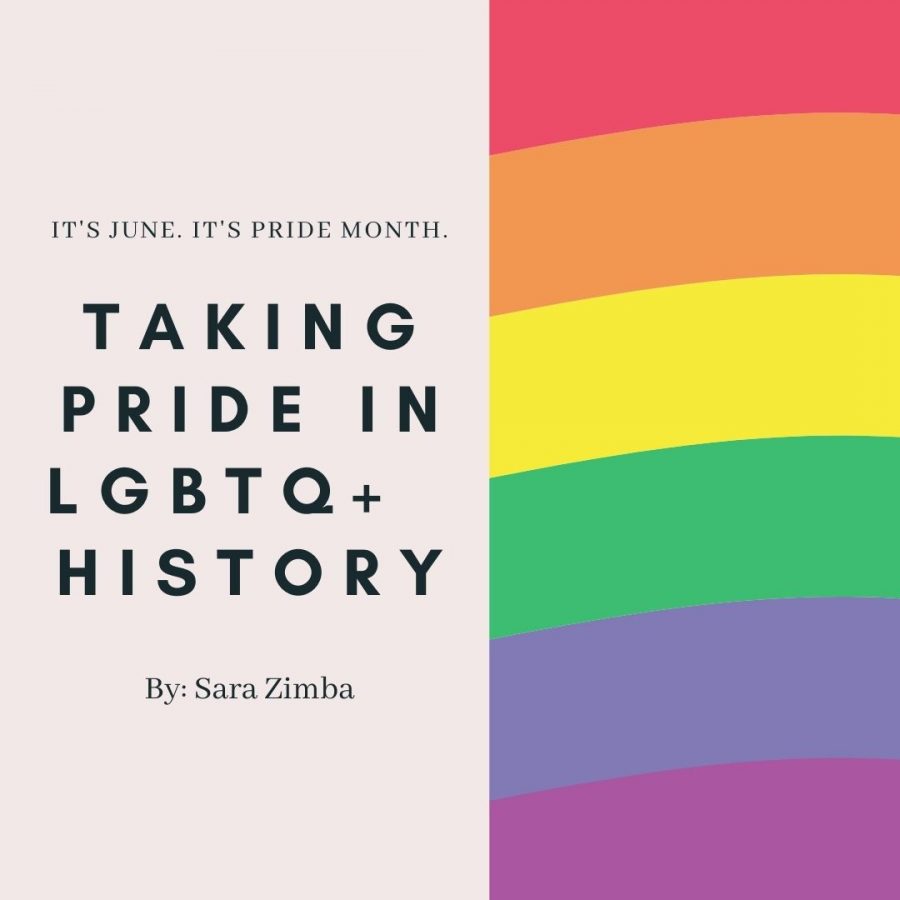Taking Pride in LGBTQ+ history
As PRIDE month comes to an end, we celebrate LGBTQ+ history
June 29, 2021
In 2015, the supreme court ruled that same-sex couples could be married in all 50 states.
The media has conditioned most people to believe that Pride Month mostly consists of the lgbtq+ community wrapping themselves in a pride flag, showing public displays of affection, and wearing too many rainbows. This could not be more wrong. Sure, the parades are fun, but pride is actually more about fighting for equal rights, protecting transgender children, feeling proud, being accepted and represented in media, honoring the transgender women of color who paved the way of pride, expressing your gender identity in a more free way, and feeling more intensely part of a community.
The pride flag is not just a rainbow. Each line has a meaning and a history. The red line represents life, orange is healing, yellow is sunlight, green is nature, blue is serenity, and purple is spirit. If you have seen the more updated version of the flag, which was redesigned to show the progression of acceptance. There is one black line, one brown, and the transgender flag (white, baby blue and pink) lines facing inward in an arrow formation, these lines represent the history of pride. Which was heavily influenced by black transgender women and other people of color.

Fifty two years ago in a mafia owned gay bar in New York City called Stonewall Bar, there was a riot. It was not unusual for the police to stop by this bar to either collect bribes, threaten owners and patrons, or even bully and harass customers under the police chief of this time. The chief allowed the bar to remain open, but once he was replaced, his successor, James O’neill, made it his mission to close this bar.
Marsha P. Johnson. Have you heard her name? She was born on August 24th, 1945. She was a transgender woman who was an openly gay, drag queen and part of Peach Troupe. She did come out as trans later in her life. Marsha was her drag name and later the name she went by in her everyday life. Some of her many accomplishments include: modeling for Andy Warhol and becoming an activist for the protection of people living with AIDS. She was called the ”mayor of Christopher Street,” which is a part of Greenwich Village.
The first night of the Stonewall Riots, the police raided, and began beating the customers. This was not an unusual occurrence, but this was special because the patrons fought back. Upon the beating, and the harassment of the people in the bar, Johnson threw a brick at one of the officers who was hurting a smaller woman. Once Marsha threw the first brick, some others began to as well. After this, there were disagreements and riots for the next five days. The riots led to a sense of urgency to promote peace and acceptance surrounding the LGBTQ+ community. On the one year anniversary of the riots commemorative marches were held the country including in Los Angeles and Chicago. These pride marches ultimately led to the annual tradition of pride month. We would not have pride month as we know it without Marsha P. Johnson. If you’d like to learn more about transgender rights, check out The History Channel’s webpage on the Stonewall riots, What are the origins of Pride Month? And who should we thank for the LGBTQ celebration?, and our own story, Anti-Transgender Bills skyrocket.

